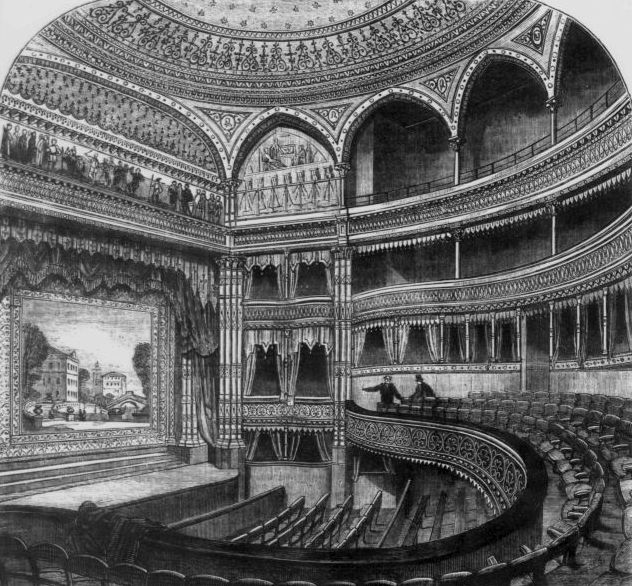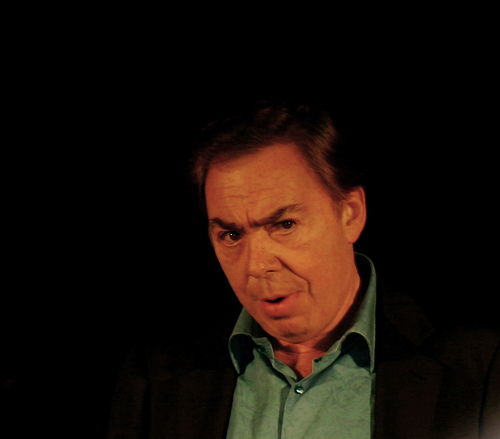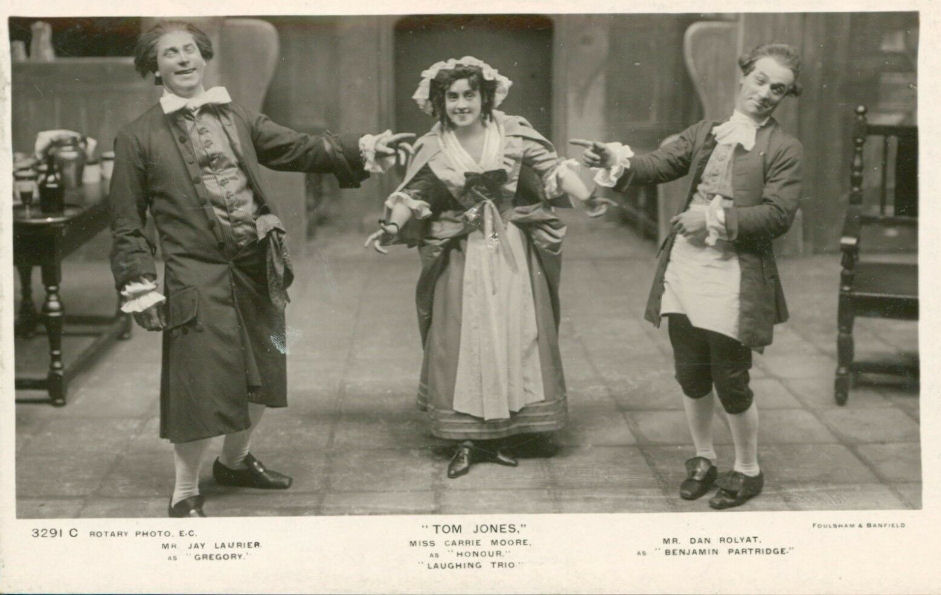|
Dorothy Ward
Dorothy Ward (26 April 1890 – 30 March 1987) was an English actress who specialised in pantomimes, playing the principal boy roles, while her husband Shaun Glenville would play the dame roles. She had a successful 52 year career and played in over 40 pantomimes between 1905 and 1957. Early career Ward was born in Aston (now part of Birmingham), Warwickshire, on 26 April 1890, to Eliza (née Millichamp, 1867–1946) and Edwin Ward (1866–), a wholesale bottler. When she was 14 she was taken to see ''Jack and the Beanstalk'' with Ada Reeve as the principal boy, and from that moment she decided on a career in pantomime. She made her stage début at the Alexandra Theatre in Birmingham in 1905, aged 15, playing Zenobia in the pantomime ''Bluebeard''. Following her success in this Robert Courtneidge offered her the role of Betty in the Edwardian musical comedy ''The Dairymaids'' at the Apollo Theatre in London (1906) opposite Phyllis Dare and Walter Passmore. The Christmas sea ... [...More Info...] [...Related Items...] OR: [Wikipedia] [Google] [Baidu] |
Aston
Aston is an area of inner Birmingham, England. Located immediately to the north-east of Central Birmingham, Aston constitutes a ward within the metropolitan authority. It is approximately 1.5 miles from Birmingham City Centre. History Aston was first mentioned in the Domesday Book in 1086 as "Estone", having a mill, a priest and therefore probably a church, woodland and ploughland. The Church of Saints Peter and Paul was built in medieval times to replace an earlier church. The body of the church was rebuilt by J. A. Chatwin during the period 1879 to 1890; the 15th century tower and spire, which was partly rebuilt in 1776, being the only survivors of the medieval building. The ancient parish of Aston (known as Aston juxta Birmingham) was large. It was separated from the parish of Birmingham by AB Row, which currently exists in the Eastside of the city at just 50 yards in length. Aston, as Aston Manor, was governed by a Local Board from 1869 and was created as an Urban Distri ... [...More Info...] [...Related Items...] OR: [Wikipedia] [Google] [Baidu] |
National Portrait Gallery, London
The National Portrait Gallery (NPG) is an art gallery in London housing a collection of portraits of historically important and famous British people. It was arguably the first national public gallery dedicated to portraits in the world when it opened in 1856. The gallery moved in 1896 to its current site at St Martin's Place, off Trafalgar Square, and adjoining the National Gallery. It has been expanded twice since then. The National Portrait Gallery also has regional outposts at Beningbrough Hall in Yorkshire and Montacute House in Somerset. It is unconnected to the Scottish National Portrait Gallery in Edinburgh, with which its remit overlaps. The gallery is a non-departmental public body sponsored by the Department for Digital, Culture, Media and Sport. Collection The gallery houses portraits of historically important and famous British people, selected on the basis of the significance of the sitter, not that of the artist. The collection includes photographs and carica ... [...More Info...] [...Related Items...] OR: [Wikipedia] [Google] [Baidu] |
Daly's Theatre
Daly's Theatre was a theatre in the City of Westminster. It was located at 2 Cranbourn Street, just off Leicester Square. It opened on 27 June 1893, and was demolished in 1937. The theatre was built for and named after the American impresario Augustin Daly, but he failed to make a success of it, and between 1895 and 1915 the British producer George Edwardes ran the house, where he presented a series of long-running musical comedies, including ''The Geisha'' (1896), and English adaptations of operettas, including ''The Merry Widow'' (1907). After Edwardes died in 1915 Daly's had one more great hit, '' The Maid of the Mountains'' (1917), which ran for 1,352 productions, but after that the fortunes of the theatre declined; Noël Coward's play '' Sirocco'' (1927) was a notable failure. By the mid-1930s Leicester Square had become better known for cinemas. Daly's was sold to Warner Brothers who demolished it and erected a large cinema on the site. History Background and early ... [...More Info...] [...Related Items...] OR: [Wikipedia] [Google] [Baidu] |
Aldwych Theatre
The Aldwych Theatre is a West End theatre, located in Aldwych in the City of Westminster, central London. It was listed Grade II on 20 July 1971. Its seating capacity is 1,200 on three levels. History Origins The theatre was constructed in the newly built Aldwych as a pair with the Waldorf Theatre, now known as the Novello Theatre. Both buildings were designed in the Edwardian Baroque style by W. G. R. Sprague. The Aldwych Theatre was funded by Seymour Hicks in association with the American impresario Charles Frohman, and built by Walter Wallis of Balham. The theatre opened on 23 December 1905 with a production of ''Blue Bell'', a new version of Hicks's popular pantomime ''Bluebell in Fairyland''. In 1906, Hicks's ''The Beauty of Bath'', followed in 1907 by '' The Gay Gordons'', played at the theatre. In February 1913, the theatre was used by Serge Diaghilev and Vaslav Nijinsky for the first rehearsals of '' Le Sacre du Printemps'' before its première in Paris during May. ... [...More Info...] [...Related Items...] OR: [Wikipedia] [Google] [Baidu] |
The Gay Gordons (musical)
''The Gay Gordons'' is a 1907 Edwardian musical comedy with a book by Seymour Hicks, music by Guy Jones and lyrics by Arthur Wimperis, C. H. Bovill, Henry Hamilton and P. G. Wodehouse, who wrote the lyrics to "Now That My Ship's Come Home" and "You, You, You". The title refers to both the Clan Gordon and the famed Scottish regiment the Gordon Highlanders as the plot involves the heir to the clan and a soldier from the regiment.''The Gay Gordons'' in ''The Play Pictorial'', No. 63, Vol. 10, October 1907 The original production was produced by Charles Frohman and opened at London's Aldwych Theatre on 11 September 1907. The piece starred Hicks as Angus Graeme, and his wife Ellaline Terriss as Peggy Quainton. William Lugg played Andrew Quainton. Zena Dare played Victoria Siddons, and when the show went on tour, she played Peggy Quainton. Synopsis The castle of the Scottish Gordon clan has been leased to a wealthy American, Andrew Quainton, whose daughter is the charming Peggy. ... [...More Info...] [...Related Items...] OR: [Wikipedia] [Google] [Baidu] |
Gaiety Theatre, London
The Gaiety Theatre was a West End theatre in London, located on Aldwych at the eastern end of the Strand. The theatre was first established as the Strand Musick Hall in 1864 on the former site of the Lyceum Theatre. In 1868, it became known as the Gaiety Theatre and was, at first, known for music hall and then for musical burlesque, pantomime and operetta performances. From 1868 to the 1890s, it had a major influence on the development of modern musical comedy. Under the management of John Hollingshead until 1886, the theatre had early success with '' Robert the Devil'', by W. S. Gilbert, followed by many other burlesques of operas and literary works. Many of the productions starred Nellie Farren. Hollingshead's last production at the theatre was the burlesque '' Little Jack Sheppard'' (1885–86), produced together with his successor, George Edwardes. Edwardes's first show, '' Dorothy'', became a long-running hit. In the 1880s and 90s, the theatre had further success wi ... [...More Info...] [...Related Items...] OR: [Wikipedia] [Google] [Baidu] |
Havana (Edwardian Musical)
''Havana'' is an Edwardian musical comedy in three acts, with a book by George Grossmith, Jr. and Graham Hill, music by Leslie Stuart, lyrics by Adrian Ross and additional lyrics by George Arthurs. It premiered on 25 April 1908 at the Gaiety Theatre, London, starring Evie Greene as Consuelo, W. H. Berry as Reginald Brown, Lawrence Grossmith as Don Adolfo and Mabel Russell as Pepita.Cast and productions details at '''' website (1902–1910) of the Templeman Library at the University of Kent at Canterbury A young wa ... [...More Info...] [...Related Items...] OR: [Wikipedia] [Google] [Baidu] |
George Edwardes
George Joseph Edwardes (né Edwards; 8 October 1855 – 4 October 1915) was an English theatre manager and producer of Irish ancestry who brought a new era in musical theatre to the British stage and beyond. Edwardes started out in theatre management, soon working at a number of West End theatres. By the age of 20, he was managing theatres for Richard D'Oyly Carte. In 1885, Edwardes became a manager at the Gaiety Theatre with John Hollingshead, who soon retired. For the next three decades, Edwardes ruled a theatrical empire including the Gaiety, Daly's Theatre, the Adelphi Theatre and others, and sent touring companies around Britain and abroad. In the early 1890s, Edwardes recognised the changing tastes of musical theatre audiences and led the movement away from burlesque and comic opera to Edwardian musical comedy. Life and career Edwardes was born at Great Grimsby, Lincolnshire, England. He was the eldest of four sons and three daughters of James Edwards, comptroller of ... [...More Info...] [...Related Items...] OR: [Wikipedia] [Google] [Baidu] |
Gielgud Theatre
The Gielgud Theatre is a West End theatre, located on Shaftesbury Avenue, at the corner of Rupert Street, in the City of Westminster, London. The house currently has 986 seats on three levels. The theatre was designed by W. G. R. Sprague and opened on 27 December 1906 as the Hicks Theatre, named after Seymour Hicks, for whom it was built. The first play at the theatre was a hit musical called ''The Beauty of Bath'' co-written by Hicks. Another big success was ''A Waltz Dream'' in 1908. In 1909, the American impresario Charles Frohman became manager of the theatre and renamed the house the Globe Theatre, a name that it retained for 85 years. ''Call It a Day'' opened in 1935 and ran for 509 performances, a long run for the slow inter-war years. ''There's a Girl in My Soup'', opening in 1966, ran for almost three years, a record for the theatre that was not surpassed until ''Daisy Pulls It Off'' opened in April 1983 to run for 1,180 performances. Refurbished in 1987, the the ... [...More Info...] [...Related Items...] OR: [Wikipedia] [Google] [Baidu] |
Ein Walzertraum
' (''A Waltz Dream'') is an operetta by Oscar Straus with a German libretto by and , based on the novella ' (''Nux, the Prince Consort'') by Hans Müller-Einigen from his 1905 book ' (''Book of Adventures''). The young Jacobson presented Straus with a libretto for ''Ein Walzertraum'' at a coffee house in the Vienna Prater in 1906. Straus was inspired by the text and completed the work within 12 months for its premiere in spring 1907. Performance history It premiered on 2 March 1907 at the Carltheater in Vienna. English adaptations Following the success of the operetta in Vienna, productions of the work, under the name ''A Waltz Dream'', were mounted in English for premieres at the Chestnut Street Opera House in Philadelphia on 6 January 1908, in New York City at the now-demolished Broadway Theatre on 27 January 1908 (with an English libretto adapted by Joseph W. Herbert), and in London on 28 March 1908 at the Hicks Theatre (adapted by Basil Hood, with lyrics by Adrian R ... [...More Info...] [...Related Items...] OR: [Wikipedia] [Google] [Baidu] |
Operetta
Operetta is a form of theatre and a genre of light opera. It includes spoken dialogue, songs, and dances. It is lighter than opera in terms of its music, orchestral size, length of the work, and at face value, subject matter. Apart from its shorter length, the operetta is usually of a light and amusing character. It sometimes also includes satirical commentaries. "Operetta" is the Italian diminutive of "opera" and was used originally to describe a shorter, perhaps less ambitious work than an opera. Operetta provides an alternative to operatic performances in an accessible form targeting a different audience. Operetta became a recognizable form in the mid-19th century in France, and its popularity led to the development of many national styles of operetta. Distinctive styles emerged across countries including Austria-Hungary, Germany, England, Spain, the Philippines, Mexico, Cuba, and the United States. Through the transfer of operetta among different countries, cultural cosmo ... [...More Info...] [...Related Items...] OR: [Wikipedia] [Google] [Baidu] |
Tom Jones (Edward German)
''Tom Jones'' is a comic opera in three acts by Edward German founded upon Henry Fielding's 1749 novel, ''The History of Tom Jones, a Foundling'', with a libretto by Robert Courtneidge and Alexander M. Thompson and lyrics by Charles H. Taylor. After a run in Manchester, England, the opera opened in London at the Apollo Theatre on 17 April 1907 for an initial run of 110 performances. It starred Ruth Vincent as Sophia and Hayden Coffin as Tom Jones. The piece also had a provincial tour and a popular Broadway run in 1907. It then disappeared from the professional repertory but eventually became very popular with amateur groups. Background and productions The impresario Robert Courtneidge, noting the bicentennial of Fielding's birth in 1907, decided to adapt Fielding's novel as a comic opera. He commissioned Thompson and Taylor to collaborate on the libretto and German to write the music. The eroticism of the novel was reduced for Edwardian audiences. The influences of German's pr ... [...More Info...] [...Related Items...] OR: [Wikipedia] [Google] [Baidu] |









.jpg)
